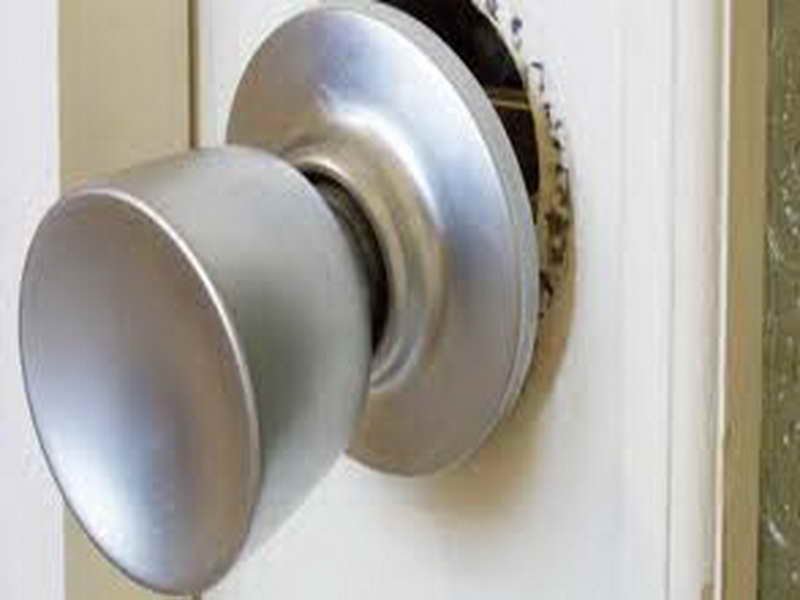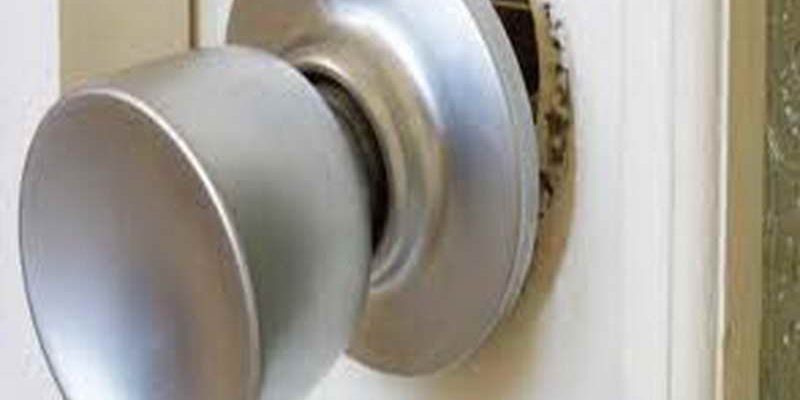
Honestly, nobody wants to break out the toolbox the minute their knob gets loose, especially if you’re about to leave, expecting guests, or just don’t have the time for a full fix. But you don’t have to live with a jiggly handle until you can get to it properly. There are a few clever, safe, and surprisingly effective ways to stop the problem from getting worse—at least until you can tackle a permanent repair this weekend.
Let me walk you through some of the best temporary fixes for a loose exterior door knob. We’ll get your entryway feeling safer, your nerves calmed, and your plans back on track—using stuff you already own or quick tricks that really work.
Why Exterior Door Knobs Get Loose—and Why You Should Act Fast
You might be wondering, what actually makes a door knob get loose? It’s usually not one dramatic moment. Door knobs are like the unsung heroes of daily life, quietly absorbing every twist, slam, and hurried exit. Over time, the screws holding the knob or the plate behind it can work themselves free. Sometimes the metal inside the mechanism wears down, or extreme weather causes wooden doors to expand and contract, loosening things up.
Here’s the thing: ignoring a loose exterior door knob can leave your house vulnerable. Not only is it easier for someone to force open a jiggly knob, but the more it rattles, the more likely the internal parts are to wear out completely. That can turn a simple fix into a full-on replacement—or worse, leave you locked out or in.
Taking quick, temporary steps is like putting a bandage on a scrape: it keeps things from getting worse, buys you time, and helps keep your door secure until you can make a permanent repair.
Tightening Screws: The Simplest Quick Fix
Before you reach for anything fancy, check for the most obvious culprit: loose screws. Most exterior door knobs have two screws on the inside faceplate—the part you see when the door’s open. Sometimes these get loose from daily use or even seasonal changes.
Here’s what you need to do:
- Grab a Phillips-head screwdriver. That’s usually the right shape for door knob screws, but take a peek to double-check.
- Open your door and look for visible screws on the knob plate.
- Give each screw a gentle turn clockwise. If it spins freely, keep going until it’s snug, but never over-tighten—stripping the screw makes your problem worse.
If the screws were extremely loose, you’ll probably feel a dramatic improvement right away. But, if you find you’re having to retighten every few days, your door might have a deeper problem, like worn wood or a stripped thread. This is still a great temporary fix—it just might not last more than a week or two.
Insight: Sometimes, those screws hide under a decorative cap or faceplate. If you don’t see any screws, gently twist or pry off the knob’s cover to reveal them.
Toothpick or Matchstick Trick: Fix For Stripped Screw Holes
You tightened the screws, but they refuse to stay tight? You’re probably dealing with a *stripped screw hole*—it’s like the screw’s anchor in the wood is all chewed out. This is super common for older doors, especially ones made of soft wood.
Here’s a hack that actually works:
- Remove the screw completely from the loose hole.
- Grab a few wooden toothpicks or plain wooden matchsticks (the kind without the flammable heads). Break or snip them so they’re the length of the hole.
- Dab a little wood glue on the toothpicks if you have some, but don’t sweat it if you don’t.
- Jam the toothpicks into the hole. You want them packed in tightly so the hole is basically “filled” again.
- Reinsert the screw and tighten it as usual.
This simple trick gives the screw something solid to grip, restoring stability to your knob for a while. It’s not a forever solution—the wood will compress again over time, especially if the door sees heavy use—but it’ll often hold up for weeks or even months.
Pro Tip: If you don’t have toothpicks, in a pinch, try small slivers of cardboard or even craft sticks.
Temporary Support With Tape: Quick Fix for Emergency Stability
If your exterior door knob feels like it’s about to come off in your hand and you don’t have time for tools, tape can be a lifesaver. It won’t solve the deeper problem, but it can keep the knob in place long enough for you to get through a busy day.
Here’s what usually works best:
- Painter’s tape or masking tape: Easy to remove, less likely to damage finishes.
- Duct tape: Super strong, but it can leave residue and marks on painted or metal surfaces.
- Electrical tape: Flexible and sticky, but not as sturdy for big gaps.
Wrap the tape tightly around the base of the knob and anchor it to the door. The goal isn’t to make it beautiful—it’s to keep it from turning freely or pulling out with every use. You’ll lose some comfort and the look won’t win any awards, but this approach stops things from getting worse if you’re truly in a hurry.
Temporary tape tricks: If the knob’s cover fell off, tape can briefly hold it in place. And if the keyway (where you insert the key) is drifting off center, a bit of tape can help line things up until you can repair the alignment.
Using Temporary Shims: For Wobbly or Sunken Door Knobs
Sometimes, tightening the screws doesn’t help because the plate behind the knob is sinking into the wood. This is especially common with older doors, doors exposed to a lot of humidity, or cheap hollow-core doors where the material’s gone soft. If your knob feels loose even when the screws are tight, shimming can help.
What you’ll need:
- Thin pieces of wood (like popsicle sticks or craft shims)
- Folded cardboard or several layers of thick paper
- Scissors or a utility knife
- Optional: A little wood glue for stronger hold
Steps:
- Remove the knob and plate to expose the area underneath.
- Cut or break your shim material so it fits snugly into the gap behind the plate.
- Reattach the knob and tighten the screws, compressing the new shim material between the door surface and the knob plate.
This gives your knob something solid to press against, letting the screws “bite” into stronger material. Again, it’s not a forever-fix, but it stops further damage and buys you time—especially if the underlying wood is soft or crumbling.
When To Try a Threadlocker: Stopping Screws From Backing Out
You might be dealing with a set of screws that just won’t stay tight, even though the screw holes themselves aren’t stripped. Maybe it’s a heavy-duty Kwikset lock, or a fancier lever-style handle, and the vibrations from the door keep working the screws loose. Here’s where threadlocker can be a game-changer.
Threadlocker is that blue or red goo you see at the hardware store—brands like Loctite. It’s used on screws that need to *stay* tight but can eventually be removed. Just dab a drop on the screw’s threads before tightening it down. The sticky formula helps keep the screw from backing out with use.
Let me be clear: *Use the blue (removable) version, not the red (permanent) kind.* Blue threadlocker will let you remove the screw for a permanent repair later. If you have none on hand, a tiny drop of clear nail polish can work in a pinch.
Just remember, this won’t fix a stripped hole, but it will help if the main issue is vibration or frequent shifting.
When None of These Quick Fixes Are Enough
Here’s the honest truth—not every loose exterior door knob can be made safe with a fast fix. Sometimes you’re up against a totally worn-out mechanism, a cracked mounting plate, or wood that’s so damaged no amount of shimming or toothpicks will hold. If your knob pulls straight off in your hand or the latch doesn’t catch, you might need to leave the door out of use for a few hours and do a real repair or replacement.
In these cases, don’t force it—forcing a broken lock can damage the door or make it impossible to fix later. If your door is your main entryway, swap to another door temporarily, or use a secondary lock until you have time to tackle a proper repair.
Permanent Repair vs. Temporary Fix: What to Expect Next
The temporary fixes above will keep most exterior door knobs secure for days or even weeks, but they aren’t meant to be permanent. Here’s what you need to know when you’re ready to tackle a full repair:
- If you’ve used toothpicks or shims, you’ll need to fill the screw holes with wood filler and drill fresh pilot holes for best results.
- If your knob or lock is older and showing lots of wear, replacement might be safer and easier than repeated repairs. Consider upgrading to a modern, more secure lock—especially for a front or back door.
- If you’re not confident, locksmiths or handy friends are quicker and less expensive than a call for full door replacement. Don’t hesitate to ask for help!
The good news? Most permanent door knob repairs are a simple DIY project. You just need the right tools, a little time, and the peace of mind that comes with a properly working lock.
Bringing It All Together: Practical Solutions for Everyday Problems
Whether it’s a trusty old Schlage, a modern Kwikset, or something in between, a loose exterior door knob doesn’t have to throw off your whole day. There are plenty of temporary fixes you can try—everything from tightening the screws, using toothpicks for stripped holes, taping it in place, or adding quick shims. Each gives your home a boost in security and helps you avoid a bigger headache down the line.
The most important thing? Don’t ignore a wiggly door knob, even if it seems like a small problem. Temporary fixes buy you time, but when you have a moment, give your door the care it deserves with a proper repair or replacement. Your front door is the gateway to your home, after all—it deserves to be sturdy, safe, and stress-free.
